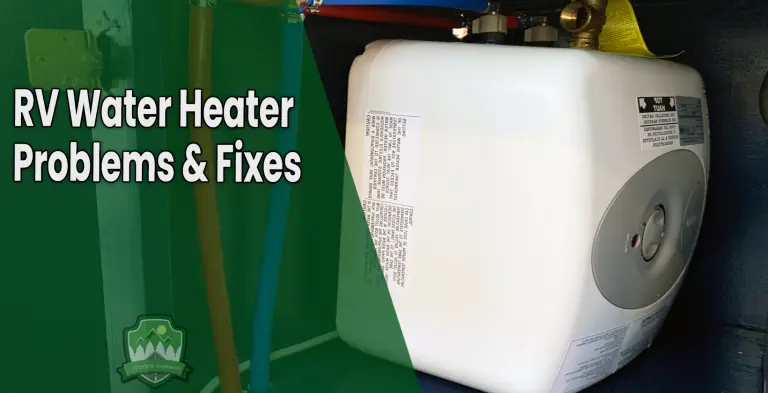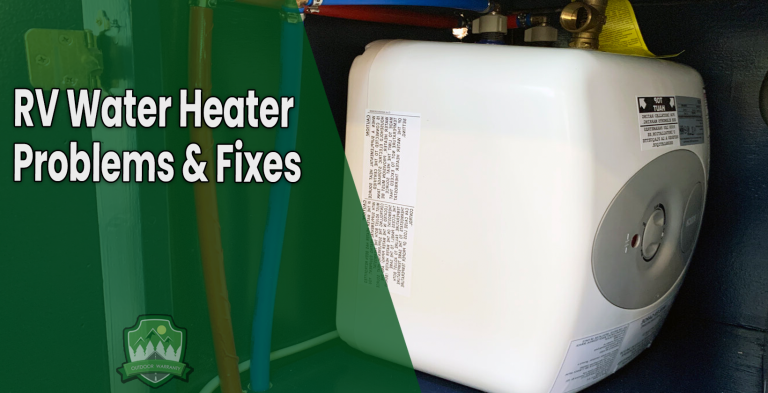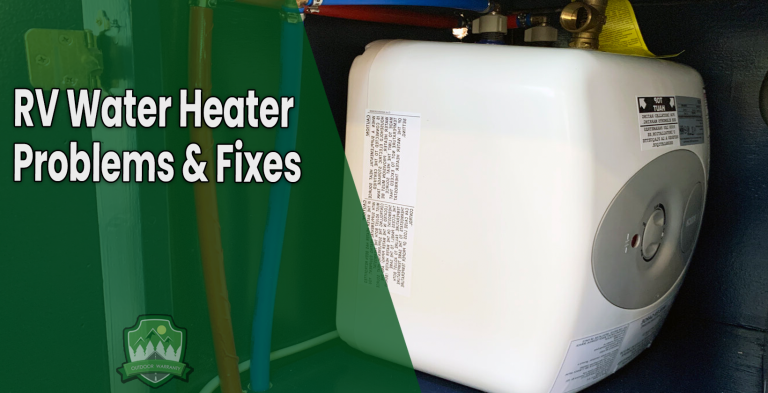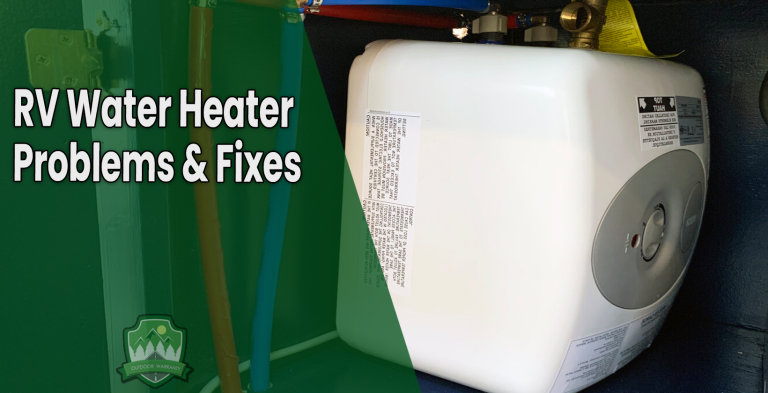Table of Contents
The RV lifestyle offers mobility, flexibility, and the freedom to travel while maintaining a comfortable living space. The (Recreational Vehicle) RV lifestyle is popular among travelers wanting to explore new places, reduce expenses, or simplify their daily living. Full-time RV travelers, retirees, and remote workers connect through campgrounds, online forums, and events.
Starting RV life requires understanding costs and feasibility. Buying or renting an RV, insurance, and taxes are major initial expenses. Living costs include fuel, campground fees, maintenance, and utilities. Budgeting helps manage the expenses and ensures financial stability. The RV lifestyles provide freedom and challenges. Traveling to different locations is a major advantage. Limited space, weather conditions, and maintenance are complex. Planning routes and choosing RV-friendly sites reduce unexpected problems.
Efficient RV living requires organization and wise use of space. Storage solutions, multi-purpose furniture, and essential supplies improve convenience. Reliable internet, meal planning, and routine maintenance ensure a smooth experience. Balancing work, travel, and daily responsibilities is key to a sustainable RV life. A structured schedule improves productivity while allowing time for exploration. The RV lifestyle community offers support, guidance, and connections with like-minded travelers. Proper planning and adaptability create a rewarding and enjoyable life on the road.
What is the RV Lifestyle?
The RV lifestyle involves living and traveling in a recreational vehicle. The RV lifestyle allows people to explore different places while carrying home essentials. A lifestyle centered on RVing provides freedom and flexibility from the constraints of a fixed location. An RV is equipped with a sleeping area, a kitchen, and a bathroom. Travelers stay at RV parks with electricity, water, and waste disposal. Boondocking involves camping in remote areas without hookups.
Traveling across states, visiting national parks, and attending RV gatherings are all common activities. Holidays and weekend trips are reasons people use RVs, but others live in them full-time. The freedom to travel at their own pace is one of the reasons why people choose traveling as a lifestyle. Living closer to nature offers peace and relaxation. Downsizing to a recreational vehicle helps people focus on experiences rather than material possessions.
Can you Live in an RV?
Yes, you can live in an RV. Travelers choose their lifestyles for their mobility and
independence. Zoning laws and local regulations vary by location, affecting where RV
living is allowed. Full-time residency is permitted in some areas but not in others.
Researching local laws is necessary to avoid legal issues.
Daily life in an RV requires adapting to a small space. Cooking is done using compact
kitchens or portable appliances. Sleeping areas include foldable beds or built-in
sleeping spaces. Hygiene is maintained through onboard bathrooms or campground
facilities. Managing water use and waste disposal is essential for long-term RV living.
Finding RV-friendly locations makes the lifestyle easier. Campgrounds offer electricity,
water, and waste services. Long-term parking is available in some areas with access to
necessary resources. Planning ensures a comfortable and sustainable RV living
experience.

How to Start the RV Life?
To start the RV life, follow the twelve steps below.
- Determine the Lifestyle Goal. – Decide between full-time living or part-time travel. Consider the level of mobility and preferred destinations.
- Choose the Right RV. – Select a model that fits budget, travel needs, and living space requirements. Consider size, amenities, and fuel efficiency.
- Set a Budget. – Plan for the initial RV purchase, insurance, maintenance, and campground fees. Factor in fuel, food, and emergency expenses.
- Understand Legal Requirements. – Research zoning laws, parking restrictions, and residency rules. Check RV registration and insurance policies.
- Plan the First Route. – Map out travel destinations and RV-friendly campgrounds. Identify locations with necessary amenities like power, water, and waste disposal.
- Downsize Belongings. – Keep only essential items to maximize space. Prioritize multi-functional and compact storage solutions.
- Prepare for Daily Living. – Set up kitchen essentials, sleeping arrangements, and bathroom supplies. Stock necessary tools and maintenance equipment.
- Learn Basic RV Maintenance. – Understand how to handle common repairs, check tire pressure, and maintain water and electrical systems.
- Establish a Sustainable Power Source. – Choose between generator use, solar panels, or campground hookups. Monitor energy consumption for efficiency.
- Test the RV Before Long Trips. – Take short trips to practice driving, parking, and setting up. Familiarize with the vehicle’s systems and limitations.
- Find RV-Friendly Communities. – Contact other RV travelers through forums, social media groups, or local meetups for advice and support.
- Stay Flexible and Adapt. – Expect unexpected challenges and adjust plans accordingly. Monitor weather conditions and road accessibility for safe travel.
Is the RV Lifestyle for Everyone?
No, the RV lifestyle is not for everyone. Mobility and simplicity appeal to travelers, while
stability appeals to professionals. Retirees, remote workers, and travel enthusiasts
choose RV living for its flexibility. Families seeking adventure and people looking to
reduce living costs adopt the lifestyle.
The RV lifestyle exists for travelers wanting freedom from a fixed location. The RV
lifestyle allows travelers to explore different places while maintaining basic comforts.
Travelers choose an eco-friendly lifestyle to be closer to nature and experience a
minimalist lifestyle.
Living in an RV offers opportunities for travel, outdoor activities, and a strong sense of
community. RV parks and campgrounds bring people together, creating friendships and
shared experiences. The RV community provides support, advice, and a network of
like-minded individuals.

What are the Benefits the RV Lifestyle?
The benefits of RV lifestyle are listed below.
- Freedom: – The RV lifestyle allows people to change locations whenever desired, offering the flexibility to explore various destinations at their own pace.
- Affordability: – Living in an RV eliminates expenses like mortgages and property taxes, leading to significant cost savings.
- Reduced Clutter: – The limited space in an RV encourages minimalism, prompting individuals to prioritize essential belongings and simplify their lives.
- Opportunities for Exploration: – RV living facilitates travel to diverse locations, allowing for discovering new places and cultures.
- Community Engagement: – The RV lifestyle fosters connections with like-minded individuals, creating a sense of community among travelers.
- Closer Connection to Nature: – Living in an RV immerses oneself in natural environments, enhancing appreciation for the outdoors.
- Simplified Living: – The RV lifestyle promotes a simpler way of life, reducing the complexities associated with traditional homeownership.
- Flexibility in Work Environment: – Remote workers change work locations, providing varied and inspiring settings.
- Cost-Effective Travel: – Traveling in an RV reduces the need for hotel accommodations and dining out, leading to more economical trips
- Personal Growth: – The challenges and experiences encountered during RV living contribute to personal development and resilience.

What are the Challenges of RV Lifestyle?
The challenges of the RV lifestyle are listed below.
- Limited Space: – Living in an RV requires downsizing, which is challenging for people accustomed to larger living areas. The use of efficient organization and multifunctional furniture maximizes space.
- Maintenance: – Regular upkeep of the RV is essential to prevent leaks or mechanical failures. Developing a routine maintenance schedule and learning basic repair skills mitigate potential problems.
- Connectivity: – Accessing reliable internet and cellular service in remote areas is difficult. Investing in mobile hotspots, signal boosters, or planning stays in locations with known connectivity ensures consistent communication.
- Finding Campsites: – Securing suitable campsites during peak seasons poses a challenge due to high demand. Booking reservations well in advance and exploring less popular destinations alleviate the issue.
- Weather Concerns: – RVs offer limited insulation against extreme weather conditions that challenge temperature regulation. Monitoring weather forecasts and choosing travel routes that avoid severe climates enhance comfort and safety.
- Travel Fatigue: – Constant movement and the need for frequent planning lead to exhaustion. Incorporating rest periods and extended stays in preferred locations provides necessary downtime.
- Limited Amenities: – RVs lack certain conveniences in traditional homes, like full-sized appliances or ample storage. Adjusting expectations and finding creative solutions help adapt to the limitations.
- Emotional Adjustment: – Transitioning to full-time RV living evokes isolation or homesickness. Connecting with RV communities online and in person provides support and companionship.
- Health Care Access: – Maintaining regular medical appointments and accessing healthcare services is complicated while traveling. Planning routes near medical facilities and keeping a record of health information are responsible practices.
- Financial Management: – Unexpected expenses, like repairs or fluctuating fuel costs, impact budgets. Establishing an emergency fund helps manage RV problems, including mechanical failures or appliance malfunctions. Monitoring expenditures provides financial stability

How to Choose the Right RV for Your Needs?
Choosing the right RV for your needs is listed below.
- Budget: – Determine the amount allocated for purchasing and maintaining the RV. Consider the initial purchase price and ongoing expenses like insurance, maintenance, and fuel. Aligning the choice with financial constraints ensures sustainable RV ownership.
- Size: – Assess the appropriate size of the RV based on the number of occupants and desired living space. Larger RVs offer more amenities and space but face restrictions in specific campgrounds and present challenges in maneuverability. Smaller RVs provide greater flexibility and access to a broader range of camping sites.
- Features: – Identify essential features required for comfort and convenience. Features include kitchen facilities, bathroom amenities, sleeping arrangements, and storage capacity. Prioritizing features that align with lifestyle and travel plans enhances the RV experience.
- Intended Use: – Clarify the primary purpose of the RV—whether for part-time recreational use, full-time living, or extended travel. A more spacious and well-equipped RV is necessary for full-time living, while part-time users prefer a more compact and mobile option.
- Storage: – Evaluate the storage options available within the RV to accommodate personal belongings, equipment, and supplies. The correct storage ensures organization and comfort during travel.
- Towing Capacity: – Check that the towing vehicle has the necessary capacity to tow the selected RV safely. Understanding the weight and compatibility between the RV and the towing vehicle is crucial for safe travel.
- Fuel Efficiency: – Consider the fuel consumption of the RV for long-distance travel. Fuel-efficient models result in cost savings over time.
- Resale Value: – Research the potential resale value of the RV model. Brands and models retain value better than others, which is beneficial when upgrading or selling in the future.
- Manufacturer Reputation: – Investigate the reputation of the RV manufacturer regarding build quality, customer service, and warranty support. Choosing a reputable manufacturer leads to a more reliable and satisfying ownership experience.
- Test Drive and Inspection: – Conduct a thorough inspection before purchasing the RV. A thorough inspection helps identify potential issues and ensures the RV meets expectations in terms of performance and comfort.

What Are the Costs of having an RV Lifestyle?
The costs of having an RV lifestyle include initial and recurring expenses. Buying or renting an RV is the first major cost. Prices vary based on type, size, and features. An essential travel trailer costs $10,000, while a luxury fifth wheel costs $200,000. Insurance rates depend on coverage and RV type. Taxes apply based on state regulations.
Recurring expenses include maintenance, fuel, campground fees, and utilities. Regular upkeep involves oil changes, tire replacements, and system inspections. Fuel costs fluctuate based on travel distance and gas prices. Campground fees range from basic sites to full-service locations with water, electricity, and sewage hookups. Utilities include electricity, water, and propane for heating and cooking. Unexpected repairs require a financial cushion for emergencies.
Managing the costs requires careful planning. Sticking to a budget helps control expenses. Camping at affordable campgrounds and limiting long-distance travel reduces spending. Regular maintenance prevents costly repairs. A well-planned budget makes the RV lifestyle sustainable and enjoyable.
How to Maintain an RV for a Long Time?
To maintain an RV for a long time requires routine care, seasonal maintenance, and preventative measures. Regular RV maintenance prevents breakdowns and extends its lifespan. Checking roof seals and seams every six months helps prevent leaks. Monitoring tire pressure improves safety and fuel efficiency. Cleaning battery terminals and keeping a full charge prevents power failures. Running the generator for two hours monthly keeps it in good condition. Lubricating locks, hinges, and slide-outs ensures smooth operation.
Seasonal maintenance protects the RV from weather damage. Flushing tanks, removing water filters, and adding antifreeze before winter storage prevent freezing. A de-winterization process starts in spring with antifreeze removal and testing of all systems. Cleaning the exterior and interior prevents corrosion and keeps surfaces in good condition.
Preventative measures help avoid costly repairs. Inspecting the roof annually protects against leaks. Checking window and door seals prevents water intrusion. Servicing air conditioners, furnaces, and other appliances ensures efficient operation. Monitoring the propane system for leaks improves safety, and keeping RV maintenance records helps track service schedules. Consistent care keeps the RV in good condition and ensures safe travel.
How to Find RV-Friendly Campsites?
To find RV-friendly campsites, follow the fifteen steps below.
- Research Online Directories. – Visit websites like Campendium, RV Park Reviews, and The Dyrt to locate RV-friendly campgrounds. Check ratings, amenities, and site availability.
- Use RV-Specific Apps. – Download apps like AllStays, RV Life, and iOverlander to find campgrounds, boondocking spots, and essential service areas.
- Check National and State Parks. – Visit official park websites to confirm RV accessibility, available hookups, and site length restrictions. The size of RVs is limited in some parks.
- Explore Private Campgrounds. – Consider Good Sam, and Thousand Trails for well-equipped campgrounds with full hookups, Wi-Fi, and additional amenities.
- Verify Hookup Availability. – Confirm whether the site offers full hookups, partial hookups, or dry camping. The plan is based on electricity, water, and sewer needs.
- Read Reviews and Ratings. – Check recent reviews from RV travelers for site conditions, noise levels, and accessibility.
- Call Ahead for Reservations. – Contact campgrounds in advance, especially during peak travel seasons, to secure a spot and avoid last-minute issues.
- Check for Size Restrictions. – Ensure the campsite accommodates the RV’s length and height. Some sites have limited space for larger rigs.
- Find Pet-Friendly Sites. – Confirm pet policies before arrival. Some campgrounds have breed restrictions or designated pet areas.
- Consider Boondocking Options. – Use Bureau of Land Management (BLM) maps to find free dispersed camping areas for off-grid stays.
- Monitor Weather and Road Conditions. – Check forecasts and road accessibility, especially when heading to remote locations. Roads are unsafe for large RVs.
- Plan for Internet Connectivity. – Verify cell signal strength and Wi-Fi availability if working remotely or needing internet access.
- Review Campground Rules. – Check quiet hours, stay limits, and generator usage policies to ensure compliance.
- Look for Discounts and Memberships. – Use programs like Passport America or Harvest Hosts for discounted rates or unique camping experiences.
- Keep a Backup Plan. – Consider alternative campsites in case of full bookings or unexpected closures. Following RV Campground and Travel Tips helps avoid common issues and ensures a smooth camping experience.

How to Stay Connected While Living on the Road?
To stay connected while living on the road, reliable internet and navigation tools are essential. Mobile hotspots provide internet access through cellular networks. Dedicated hotspot devices and routers offer stronger signals for multiple devices. RV Wi-Fi extenders improve weak signals in remote areas. Satellite internet is helpful when cellular coverage is unavailable.
Services like Starlink Roam offer portable satellite connections, though they come at a higher cost. Downloading offline maps helps with navigation when there is no internet. Apps like Google Maps provide access to routes and locations without a signal. Using a mix of tools ensures stable internet and reliable navigation while traveling. Investing in RV technology and upgrades enhances work and leisure experiences on the road.
How to Balance Work and Travel in an RV Lifestyle?
To balance work and travel in an RV lifestyle, proper planning is essential. A dedicated workspace improves focus and efficiency. A foldable desk, a small table, or a converted RV space serves as an office. An ergonomic chair and good lighting make long work hours more comfortable. A structured schedule helps manage time effectively. Setting fixed work hours and deadlines keeps tasks on track. Planning work around travel allows time for productivity and exploration. Taking breaks and adjusting schedules based on location improves work-life balance.
Reliable internet is necessary for remote work. Mobile hotspots, Wi-Fi extenders, and satellite internet provide stable connections. Researching campground Wi-Fi quality and carrying backup data plans prevent disruptions. Downloading offline files and maps helps in areas with weak signals. A functional workspace, a set schedule, and a strong internet connection make working easier while traveling. Proper planning ensures productivity while enjoying the freedom of RV life.

How to Stay Healthy While Living the RV Lifestyle?
To stay healthy while living the RV lifestyle, maintaining physical activity, proper nutrition, and mental well-being is essential. Resistance bands and adjustable dumbbells allow for exercise in small spaces. Hiking, biking, and yoga provide fitness and relaxation. Cooking in an RV requires simple and efficient meal planning. Slow cookers and blenders make meal prep easier. Stocking fresh produce, lean proteins, and whole grains ensures balanced nutrition. Keeping healthy snacks like nuts and dried fruit provides quick energy.
Mental health is just as important as physical fitness. A consistent sleep routine improves energy and focus. Blackout curtains and temperature control create a better sleeping environment. Mindfulness practices like meditation and journaling help reduce stress. Focusing on fitness, healthy eating, and mental wellness ensures a balanced and fulfilling RV lifestyle. Simple habits lead to long-term well-being while traveling.







